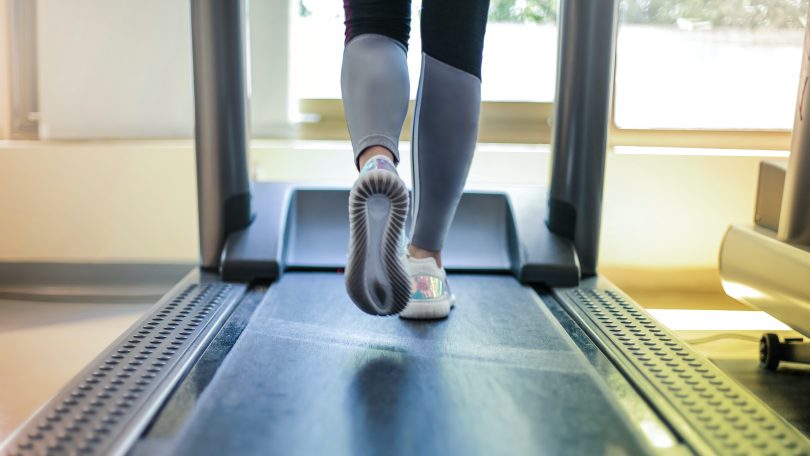Introduction:
Understanding the importance of aligning your gym routine with your circadian rhythm can significantly enhance your performance and overall well-being. Your circadian rhythm is your body’s internal clock, which regulates various physiological processes over a 24-hour cycle. By synchronizing your exercise schedule with your circadian rhythm, you can optimize your energy levels, maximize your workout effectiveness, and promote better recovery. In this article “Optimizing Performance: Aligning Your Gym Routine with Your Circadian Rhythm”, we will explore the steps you can take to align your gym routine with your circadian rhythm for improved performance.
-
Understanding the Circadian Rhythm:
- Define what the circadian rhythm is and how it affects your body.
- Explain the various factors that influence the circadian rhythm, including light exposure, sleep patterns, and meal timing.
- Discuss the importance of maintaining a consistent circadian rhythm for overall health and well-being.
-
Identifying Your Personal Circadian Rhythm:
- Provide guidance on how to identify your own circadian rhythm by tracking your energy levels, sleep patterns, and alertness throughout the day.
- Recommend using tools such as wearable devices or smartphone apps to monitor and analyze your circadian rhythm.
-
Assessing Optimal Exercise Times:
- Highlight the different phases of the circadian rhythm and how they relate to exercise performance.
- Discuss the benefits and drawbacks of morning, afternoon, and evening workouts.
- Encourage individuals to experiment with different exercise times to identify their personal peak performance periods.
-
Tailoring Your Gym Routine:
- Emphasize the importance of warming up and gradually increasing intensity during workouts, regardless of the time of day.
- Suggest incorporating a mix of aerobic, strength training, and flexibility exercises into your routine.
- Provide examples of exercises that are suitable for different parts of the day, based on their impact on energy levels and alertness.
-
Optimizing Sleep for Recovery:
- Explain how exercise affects sleep and the importance of quality sleep for optimal recovery.
- Offer tips for improving sleep hygiene, such as maintaining a consistent sleep schedule, creating a relaxing bedtime routine, and minimizing exposure to electronic devices before bed.
-
Supporting Your Routine with Nutrition:
- Discuss the relationship between meal timing and the circadian rhythm.
- Provide dietary recommendations, including consuming balanced meals, staying hydrated, and fueling before and after workouts.
- Highlight the importance of avoiding heavy meals close to bedtime to promote better sleep.
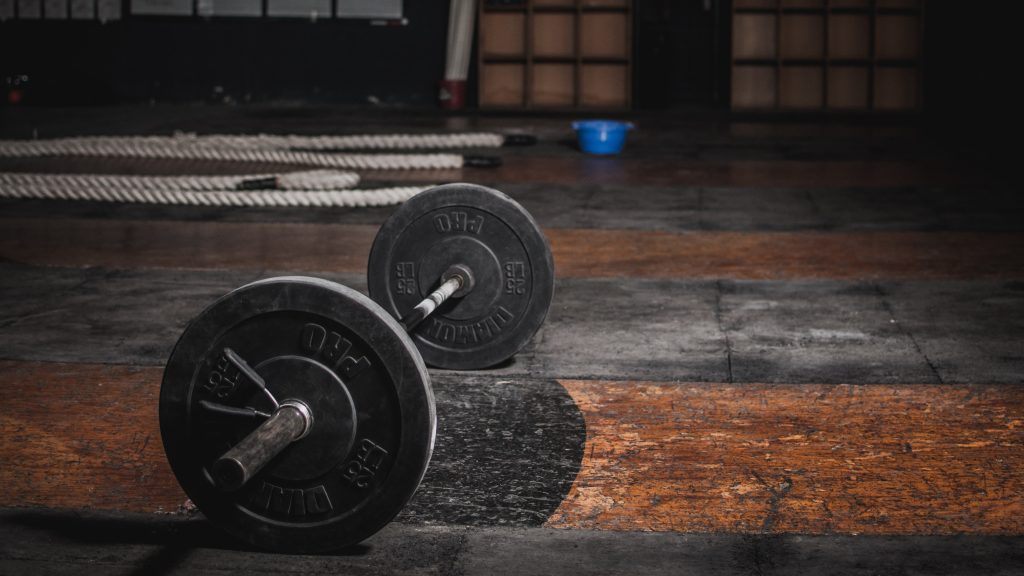
Photo by Leon Ardho: https://www.pexels.com/photo/barbell-on-the-floor-1552252/
-
Maintaining Consistency:
- Stress the significance of consistency in aligning your gym routine with your circadian rhythm.
- Encourage individuals to establish a regular exercise schedule and stick to it as much as possible.
- Provide strategies for overcoming challenges, such as travel or shift work, that may disrupt your circadian rhythm.
-
Utilizing Light Exposure:
- Explain the role of light exposure in regulating the circadian rhythm.
- Discuss the benefits of natural light exposure during the day and the importance of avoiding bright artificial light in the evening.
- Encourage individuals to incorporate outdoor activities or exercise sessions in well-lit environments during the daytime.
-
Monitoring Performance and Progress:
- Recommend keeping a workout journal to track performance and assess how it aligns with your circadian rhythm.
- Discuss the importance of tracking metrics such as energy levels, mood, and workout intensity to identify patterns and make necessary adjustments.
- Introduce smartphone apps or wearable devices that can help monitor and analyze workout performance over time.
-
Seeking Professional Guidance:
- Suggest consulting with a fitness professional, such as a personal trainer or exercise physiologist, who can provide personalized guidance based on your goals and circadian rhythm.
- Emphasize the value of expert advice in designing a customized workout program that aligns with your individual needs and preferences.
- Highlight the importance of regularly reassessing your routine and seeking feedback to optimize performance.
-
Understanding Individual Variations:
- Explain that everyone’s circadian rhythm may vary, and what works for one person may not work for another.
- Encourage individuals to listen to their bodies and make adjustments accordingly, rather than strictly adhering to generalized guidelines.
- Emphasize the importance of self-awareness and adapting the gym routine to suit personal needs and preferences.
-
Long-Term Benefits of Circadian Rhythm Alignment:
- Discuss the potential long-term benefits of aligning your gym routine with your circadian rhythm, such as improved sleep quality, increased energy levels, and enhanced overall health and fitness.
- Highlight studies or research that demonstrate the positive impact of circadian rhythm optimization on exercise performance, recovery, and overall well-being.
- Motivate readers by sharing success stories or testimonials of individuals who have experienced significant improvements by aligning their gym routine with their circadian rhythm.
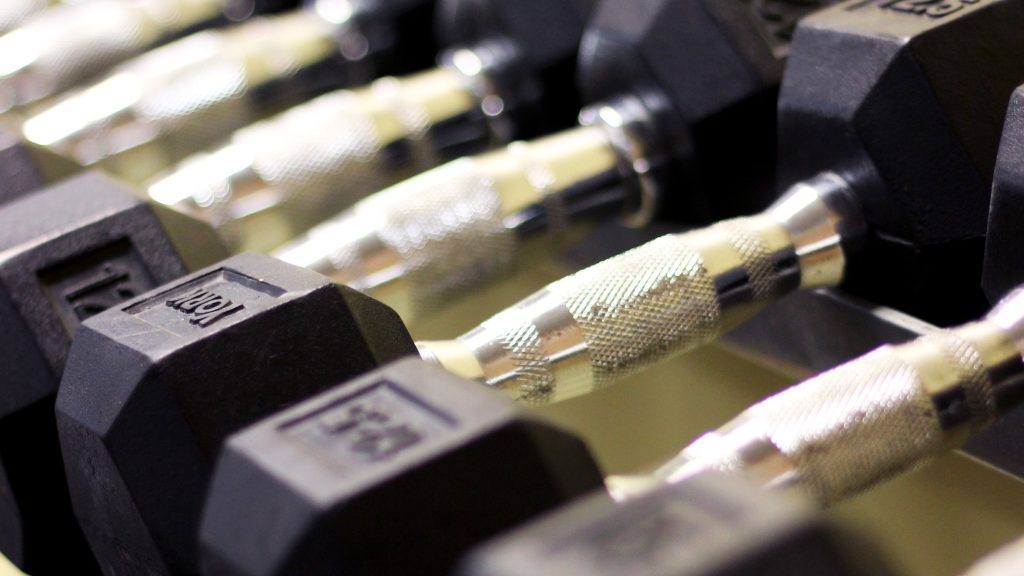
Photo by Lee Catherine Collins: https://www.pexels.com/photo/dumbbells-2652236/
-
Additional Tips for Circadian Rhythm Optimization:
- Encourage individuals to create a sleep-friendly environment by ensuring a cool, dark, and quiet bedroom.
- Suggest implementing relaxation techniques, such as meditation or deep breathing exercises, to reduce stress and promote better sleep.
- Recommend avoiding excessive caffeine intake, especially close to bedtime, as it can disrupt the circadian rhythm and interfere with sleep.
-
Exploring Chronobiology:
- Introduce the concept of chronobiology, the study of biological rhythms, and how it relates to optimizing gym routines.
- Discuss the impact of external factors such as social obligations, work schedules, and travel on the circadian rhythm.
- Provide strategies for adapting your gym routine during periods of disruption, such as incorporating shorter, high-intensity workouts or focusing on recovery and flexibility exercises.
-
Periodization and Circadian Rhythm:
- Explain the concept of periodization, which involves structuring your training into specific phases, and how it can be synchronized with your circadian rhythm.
- Discuss the benefits of adjusting training volume, intensity, and focus based on your circadian rhythm to maximize results.
- Recommend consulting with a fitness professional or coach to develop a periodized training plan that aligns with your circadian rhythm.
-
Monitoring and Managing Stress:
- Highlight the impact of stress on the circadian rhythm and exercise performance.
- Discuss the importance of stress management techniques, such as regular physical activity, relaxation exercises, and mindfulness practices, in optimizing your gym routine.
- Encourage individuals to prioritize self-care and find a balance between training intensity and recovery to mitigate the negative effects of stress on the circadian rhythm.
-
Staying Consistent with Routine Adjustments:
- Acknowledge that adjustments to your gym routine may be necessary over time as your circadian rhythm or lifestyle changes.
- Emphasize the importance of staying consistent with the adjustments made and allowing your body time to adapt to the new routine.
- Encourage individuals to regularly assess their progress, make necessary modifications, and maintain consistency in their approach to optimize performance.
-
Tracking and Analyzing Data:
- Discuss the benefits of using technology and fitness tracking devices to monitor various aspects of your gym routine and circadian rhythm, such as heart rate, sleep patterns, and energy levels.
- Recommend using apps or software that provide insights and data visualization to help identify patterns, make data-driven decisions, and optimize your performance.

Image by cottonbro studio: https://www.pexels.com/photo/black-metal-tool-on-brown-wooden-table-4753987/
-
Incorporating Recovery Strategies:
- Highlight the importance of including recovery strategies in your gym routine to support circadian rhythm alignment and prevent overtraining.
- Discuss the benefits of techniques such as foam rolling, stretching, massage therapy, and active recovery workouts in promoting optimal recovery and reducing the risk of injury.
- Encourage individuals to prioritize rest days and listen to their bodies to ensure proper recovery.
-
Seeking Professional Sleep Analysis:
- Suggest considering a professional sleep analysis, such as a polysomnography test, if you suspect a sleep disorder or persistent issues with sleep quality.
- Explain how identifying and addressing sleep-related issues can positively impact your circadian rhythm and overall gym performance.
- Provide information on sleep clinics or healthcare professionals who specialize in sleep disorders.
-
Adjusting to Travel and Time Zone Changes:
- Offer tips for adjusting your gym routine when traveling or experiencing time zone changes.
- Discuss strategies such as gradually shifting your sleep and wake times, adjusting exercise intensity based on energy levels, and utilizing natural light exposure to reset your circadian rhythm.
- Recommend maintaining consistency with meal times to help regulate your body’s internal clock.
-
Exploring Circadian Lighting Technology:
- Introduce the concept of circadian lighting technology, which mimics the natural changes in light throughout the day, to support circadian rhythm alignment.
- Discuss the potential benefits of using circadian lighting in your home or gym environment to enhance energy levels, mood, and sleep quality.
- Provide information on available circadian lighting products and resources for further exploration.
-
Continuous Learning and Adaptation:
- Encourage individuals to stay informed about the latest research and advancements in circadian rhythm optimization.
- Highlight the importance of being open to new information and adapting your gym routine as new insights emerge.
- Suggest joining online communities or forums dedicated to circadian rhythm optimization and sharing experiences with like-minded individuals.
-
Emphasizing Consistent Sleep-Wake Schedule:
- Stress the importance of maintaining a consistent sleep-wake schedule, even on weekends or days off from the gym.
- Explain that irregular sleep patterns can disrupt the circadian rhythm and affect overall performance and well-being.
- Provide strategies for establishing a regular sleep routine, such as setting a consistent bedtime and wake-up time, and creating a relaxing pre-sleep routine.
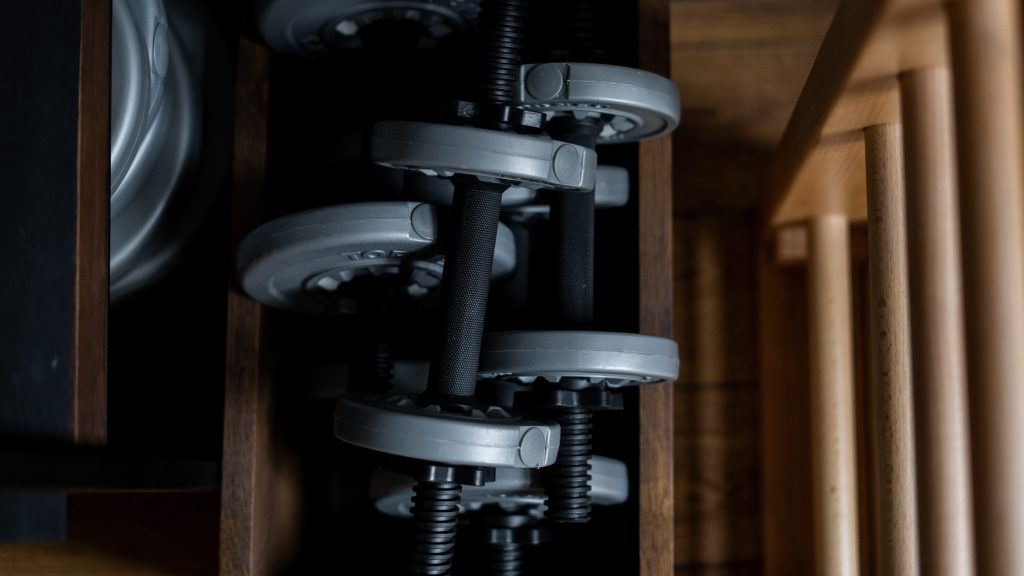
Photo by cottonbro studio: https://www.pexels.com/photo/black-and-gray-metal-tool-4325451/
-
Mindfulness and Stress Reduction Techniques:
- Discuss the role of stress in disrupting the circadian rhythm and hindering gym performance.
- Introduce mindfulness practices, such as meditation, deep breathing exercises, and yoga, as effective techniques for managing stress and promoting circadian rhythm alignment.
- Encourage individuals to incorporate these practices into their daily routine, both before and after workouts, to optimize performance and recovery.
-
Utilizing Supplements to Support Circadian Rhythm:
- Mention certain supplements, such as melatonin, magnesium, or adaptogens, that may support circadian rhythm alignment and enhance sleep quality.
- Highlight that supplementation should be done under the guidance of a healthcare professional and as part of a comprehensive approach to optimizing circadian rhythm and gym performance.
-
Considerations for Shift Workers:
- Address the unique challenges faced by shift workers in aligning their gym routine with their circadian rhythm.
- Provide strategies for adapting workouts based on shift schedules, such as adjusting exercise timing, incorporating short high-intensity workouts, and prioritizing sleep and recovery during transition periods.
- Encourage shift workers to create a consistent routine that accommodates their work schedule and promotes circadian rhythm stability.
-
Utilizing Music and Rhythm in Workouts:
- Discuss the impact of music and rhythm on energy levels and exercise performance.
- Suggest incorporating music with a suitable tempo and rhythm into workouts to enhance motivation, coordination, and overall enjoyment.
- Recommend experimenting with different genres and styles to find what works best for each individual’s circadian rhythm and workout preferences.
-
Mind-Body Connection:
- Highlight the mind-body connection and its influence on circadian rhythm and gym performance.
- Discuss practices such as visualization, positive affirmations, and gratitude exercises that can enhance mental focus, motivation, and overall well-being.
- Encourage individuals to cultivate a positive mindset and incorporate mind-body practices into their gym routine for optimal alignment with their circadian rhythm.
-
Regular Evaluations and Adjustments:
- Emphasize the importance of regularly evaluating the effectiveness of your circadian rhythm-aligned gym routine.
- Encourage individuals to monitor progress, assess energy levels, sleep quality, and overall performance, and make necessary adjustments to optimize results.
- Remind readers that individual needs and circumstances may change over time, and flexibility and adaptability are key in maintaining optimal circadian rhythm alignment.
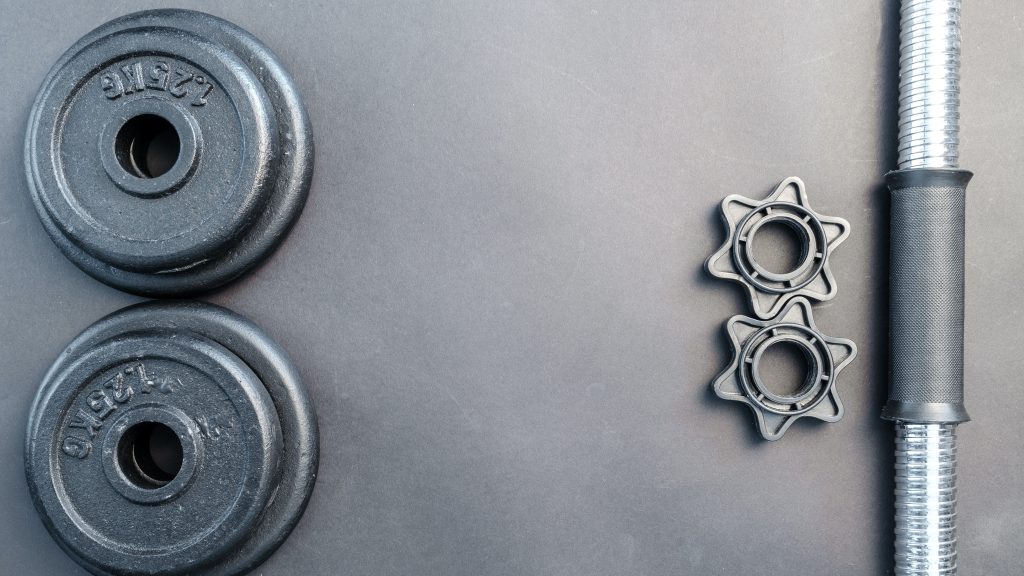
Photo by Lukas: https://www.pexels.com/photo/gray-and-black-barbell-669582/
Conclusion:
Aligning your gym routine with your circadian rhythm is a powerful strategy to optimize your performance, maximize results, and enhance overall well-being. By understanding the influence of your body’s internal clock on exercise effectiveness, sleep quality, and recovery, you can tailor your workouts and lifestyle to harmonize with your circadian rhythm. From identifying your personal circadian rhythm to optimizing sleep, incorporating recovery strategies, and exploring various techniques like mindfulness and music, each step contributes to a comprehensive approach that unlocks your full potential.
Consistency, self-awareness, and adaptability are key in this process. Regularly evaluate and adjust your routine based on your energy levels, sleep quality, and overall progress. Be open to incorporating new strategies, seeking professional guidance when needed, and staying informed about the latest research and technologies. Remember, this is an ongoing journey of self-discovery and optimization.
By optimizing your gym routine and circadian rhythm alignment, you can experience numerous benefits such as improved exercise performance, enhanced sleep quality, reduced stress levels, and overall better health. Embrace the interconnectedness of your mind and body, nurturing both through mindful practices and stress reduction techniques. Prioritize recovery, fuel your body with balanced nutrition, and maintain a consistent sleep-wake schedule to establish a solid foundation for success.
Ultimately, by aligning your gym routine with your circadian rhythm, you are tapping into the natural rhythms of your body, allowing you to perform at your best and achieve your fitness goals with greater efficiency. Embrace this holistic approach, listen to your body’s cues, and enjoy the transformative journey towards optimal performance and well-being.
Keywords:
Aligning, gym routine, circadian rhythm, optimize, performance, well-being, sleep, light exposure, natural light, artificial light, daytime, monitoring, progress, workout journal, metrics, energy levels, mood, intensity, smartphone apps, wearable devices, professional guidance, personal trainer, exercise physiologist, individual variations, listen to your body, long-term benefits, improved sleep quality, increased energy levels, enhanced overall health, fitness, success stories, testimonials, light exposure, chronobiology, social obligations, work schedules, travel, periodization, training phases, performance, recovery, self-awareness, gym routine adjustments, sleep-friendly environment, cool, dark, quiet, relaxation techniques, stress reduction, caffeine intake, sleep disorders, consistent sleep-wake schedule, mindfulness, stress reduction techniques, supplements, shift workers, music and rhythm, mind-body connection, evaluations, adjustments.
For more hacks Click Here.


